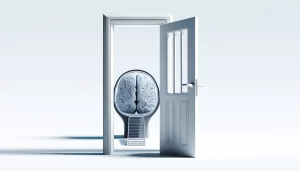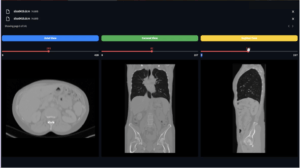Introduction
Medical imaging is a fascinating field that continually merges technology, medicine, and even art. This interdisciplinary area is vital for diagnosis, treatment planning, and the execution of medical procedures. It provides physicians with a non-invasive method to peer into the human body and analyze it in-depth.
Medical Imaging and 3D Visualization
Modern medicine heavily relies on imaging techniques like MRI, CT, and Ultrasound scans. These techniques provide a wealth of data, often in the form of 3D volumes. However, understanding this data in its raw form is not straightforward. Here is where 3D visualization steps in.
3D visualization transforms raw data into a visual format that’s easier for the human eye to understand. It is especially crucial in medical imaging because it offers a realistic view of patient anatomy, helping doctors to plan surgeries, explain procedures to patients, and even facilitate teaching in medical education.
The Vedo Library
Python, due to its simplicity and extensive range of libraries, has become a popular language in medical imaging and data visualization. One such library, ‘Vedo,’ stands out when it comes to 3D visualization. Vedo is an easy-to-use and flexible library that helps us create stunning and interactive 3D visualizations.
The Vedo library can handle a variety of formats, including STL (Stereolithography) and NIFTI (Neuroimaging Informatics Technology Initiative). STL is a file format native to the stereolithography CAD software used by 3D printers. Meanwhile, NIFTI is a modern and flexible format widely used in medical imaging, especially for brain imaging.
The Code Example
Now, let’s dive into a practical example of using Python and Vedo to visualize STL and NIFTI data.
STL
from vedo import load, show
def visualize_stl(path_to_file, bg=(1,1,1), mesh_color=(1,0,0)):
# Load an STL file
mesh = load(path_to_file)
mesh.color(mesh_color)
# Show the mesh
show(mesh, bg=bg)
visualize_stl(path_stl)NIFTI
from vedo import Volume, show
def visualize_nifti(path_to_file, bg=(1,1,1), mesh_color=(1,0,0)):
# Load a NIfTI file
vol = Volume(path_to_file)
# Show the volume
show(vol, bg=bg)
visualize_nifti(path_nifti)Takeaway
Medical imaging and 3D visualization are vast fields with many possibilities. By using Python and its amazing libraries like Vedo, we can tap into these opportunities and push the boundaries of what is achievable in healthcare. Whether you’re a researcher looking to better visualize your data or a clinician seeking better ways to understand your patient’s medical imaging, mastering 3D visualization with Python and Vedo can be an incredibly useful skill.
In this era of digital innovation, staying abreast of such advancements is crucial. As we continue to explore the crossroads of technology and healthcare, it’s evident that medical imaging and 3D visualization will continue to play a substantial role in shaping the future of medicine.



